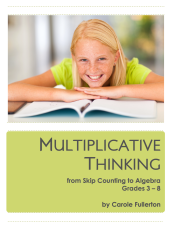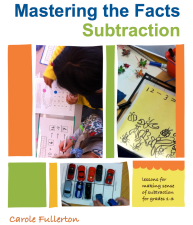Fun online game – working with doubles
I was cruising around this morning and came across some of my favourite games for practicing mental math strategies. Check out this cool game called dinosaur dentist… It asks kids to find the double fact that matches the number of teeth in the dinosaur’s mouth, then to subtract one tooth (the black one) to find the doubles less one fact! The pain-free dino does a dance to celebrate afterwards. Very cute!

The next game is called Woodcards. It uses the idea of partitioning to help kids see how they can apply doubles strategies to much larger numbers. The cards with the digits printed on them slide apart to help students remember they are talking about tens and ones! It pairs the numbers with abacus sets to represent the values. This is a good game for late grade 2 or grade 3.

They are part of the most amazing and conceptually grounded sets of games for developing number and operational sense in primary students. They are really fun (yes, even for me!) and the graphics are great too. Check them all out at ICT Numeracy Games. Developed by James Barrett to match the very evolved British curriculum, they are focussed on mental math strategies and help target those ideas in early learners.
Have fun!
Olympic Fever! Primary Math tasks around the 2010 games…
My apologies to my colleagues in Coquitlam – I promised to post this over the weekend, but ended up riding my bike to the Olympic sites downtown – and was completely overwhelmed by the celebrations…
 The 2010 Olympic Games are in full force here in Vancouver, and I for one couldn’t be more excited – or more proud – to live in this city! Kids everywhere are getting right into the games and patriotism is at an unprecedented high. So, with that in mind, I structured a math lesson with an Olympic spin for primary classrooms. The big math ideas of this lesson highlight 2 things: “We can find the sum using 3 addends”, and “We can make ten in many ways.”
The 2010 Olympic Games are in full force here in Vancouver, and I for one couldn’t be more excited – or more proud – to live in this city! Kids everywhere are getting right into the games and patriotism is at an unprecedented high. So, with that in mind, I structured a math lesson with an Olympic spin for primary classrooms. The big math ideas of this lesson highlight 2 things: “We can find the sum using 3 addends”, and “We can make ten in many ways.”
I had a great time engaging with students in Kindergarten with this task – but I’d suggest there are ways to extend it all the way through Grade 2, depending on the questions you ask. Here’s what we did.
 I told the kinders that I was a volunteer with the Olympics and that my job was to figure out for each event who had won and how many medals each country had in all. I told them that I had to produce a report for the Olympic Committee to show how I had figured it all out. I began by talking about the different kinds of medals we could win, then told them the names of the 3 countries I would be comparing – China, the US and Canada. We modelled a possible solution for one event (the speed-skating event) and figured out a way to record and compare the results.
I told the kinders that I was a volunteer with the Olympics and that my job was to figure out for each event who had won and how many medals each country had in all. I told them that I had to produce a report for the Olympic Committee to show how I had figured it all out. I began by talking about the different kinds of medals we could win, then told them the names of the 3 countries I would be comparing – China, the US and Canada. We modelled a possible solution for one event (the speed-skating event) and figured out a way to record and compare the results.

Students went to tables and, working in partners and alone, modelled and recorded solutions for each of the sports that I was in charge of – namely Snowboarding, Bobsledding, Curling, Skiing and Figure Skating. They were VERY excited to discover that Canada had won each event… With a coincidental score of 10 medals for each and every event! 🙂
Next, we compared the different ways we can make 10 (1+8+1; 3+3+4, 5+3+2, etc) and focussed on how each set made ten, no matter how we added them – a big concept for the primary grades.
To take this context and the math even further, students could compare the number of medals earned by each country and calculate the difference between each country’s total. At later grades, students could sort out how many gold, silver and bronze medals were handed out, and then how many medals were awarded in all.
Hopefully there’s something helpful in these materials for you to use in the next while. Get the results by country and by sports, images of the medals and an image to match each sport here…
Go Canada!
Carole







